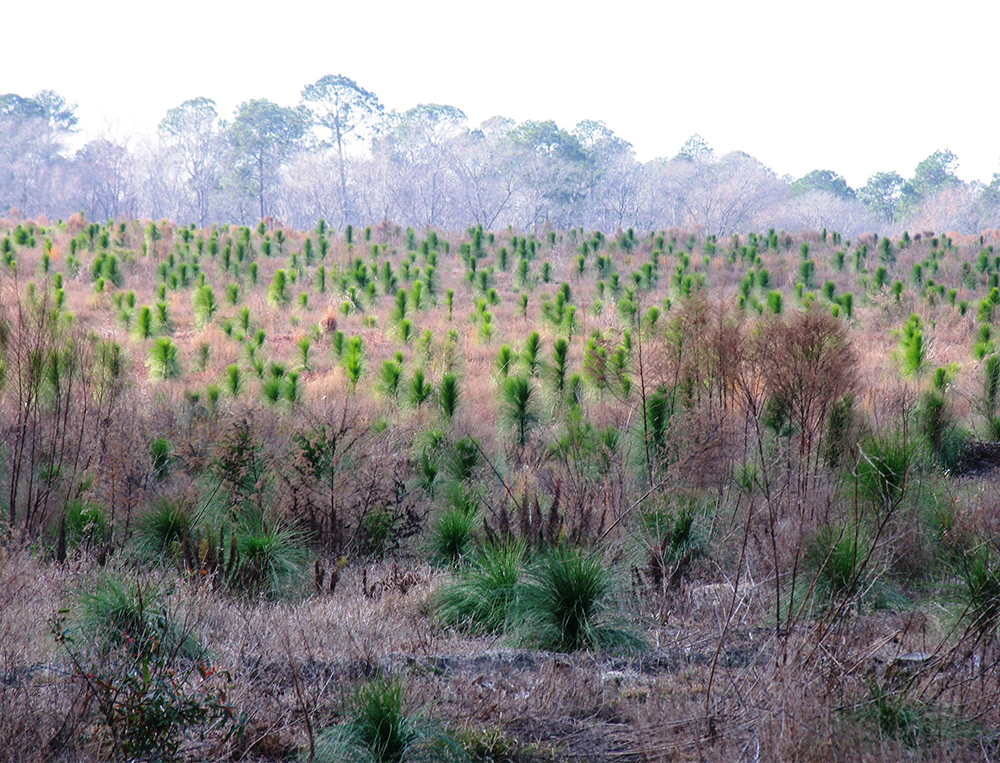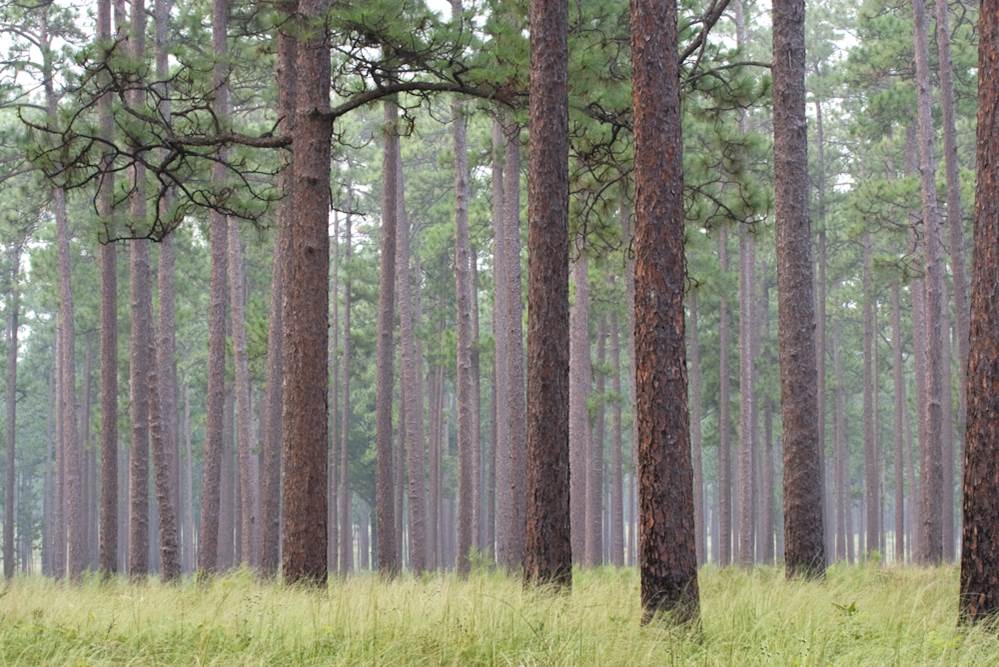We’ve all had the experience of running into an old friend unexpectedly, and spending a moment of warm reminiscence, perhaps on a street corner or coffee shop. For a brief moment you’re united again, transported to a shared memory of some distant and interesting place. Last week, I had the great pleasure of seeing many old friends, and being reminded of the selfless work they do on behalf of southern forest ecosystems and restoration.

If you’ve never been in a longleaf forest, you’re missing something very special. Longleaf naturally grows in open stands, the ground carpeted in an unrivaled diversity of grasses and wildflowers, interrupted by an occasional bog of fanciful carnivorous pitcher plants and sundew. Resistant to both fire and storm, natural disturbances historically helped limit competition from other tree species, resulting in vast, rolling landscapes dotted by massive stems of flat-topped longleaf pines. Early settlers wrote of being able to ride easily beneath these open canopies, amidst wiregrass tall enough to brush a horse’s belly. Young longleaf seedlings are a marvel, surviving for years as a simple tuft of needles, impervious to fire, only to burst forth in a single season to heights beyond the reach of danger.
The friends I bumped into in Mobile included Judd Brooke, a Tree Farmer whose personal story of timber lost in the wake of Hurricane Katrina – representing the toil and legacy of generations – is both tragic and triumphant. Glenn Hughes is a southern Mississippi Extension Agent, who was preaching the benefits and resilience of longleaf forests long before hurricanes of the last decade illustrated the point so graphically for many southern landowners. And Randy Tate, a dedicated ecologist now working on behalf of the Longleaf Alliance to stitch together intricate patches of fragmented ownerships in eastern Georgia in hopes of restoring a seamless landscape of longleaf forest.
I was pleased to share with this esteemed audience some of the relevant work funded by SFI through our Conservation and Community Partnerships Grant program. In North Carolina, both The Nature Conservancy (TNC) and the American Forest Foundation (AFF) are working on separate projects to sharpen efforts focused on landowner outreach. TNC is taking a science-based and geographic approach to identify parcels key to linking longleaf restoration, while AFF will use cleverly designed methods to target landowners most likely to engage, and ensure that outreach methods speak to interests that will motivate family landowners to respond. Both efforts operate within a Significant Geographic Area for longleaf restoration. By seeking opportunities for collaboration, we may be able to advance the science of landowner outreach for sustainable forestry, where efficiency is vital when using precious and limited resources.
Other projects funded by SFI include an effort by the U. S. Endowment for Forestry and Communities to help southern African American families retain their land across multiple generations. Besides combating cascading land loss in this community, the project will help ensure that these families understand the role that sustainable forestry can play in retaining their own family legacy, and capturing asset value that can change the lives of children and grandchildren. And SFI has an important grant to the Longleaf Alliance itself, to promote understanding of the relationships between markets and longleaf restoration. Last year, over 85% of longleaf restoration took place on private forestlands, where healthy markets provide a critical motivation for landowners to manage and restore the species.
It was great catching up with old friends in Mobile. Not the least of my pleasure was visiting the longleaf forest once again – in its own way, an old friend whose company I always welcome.

